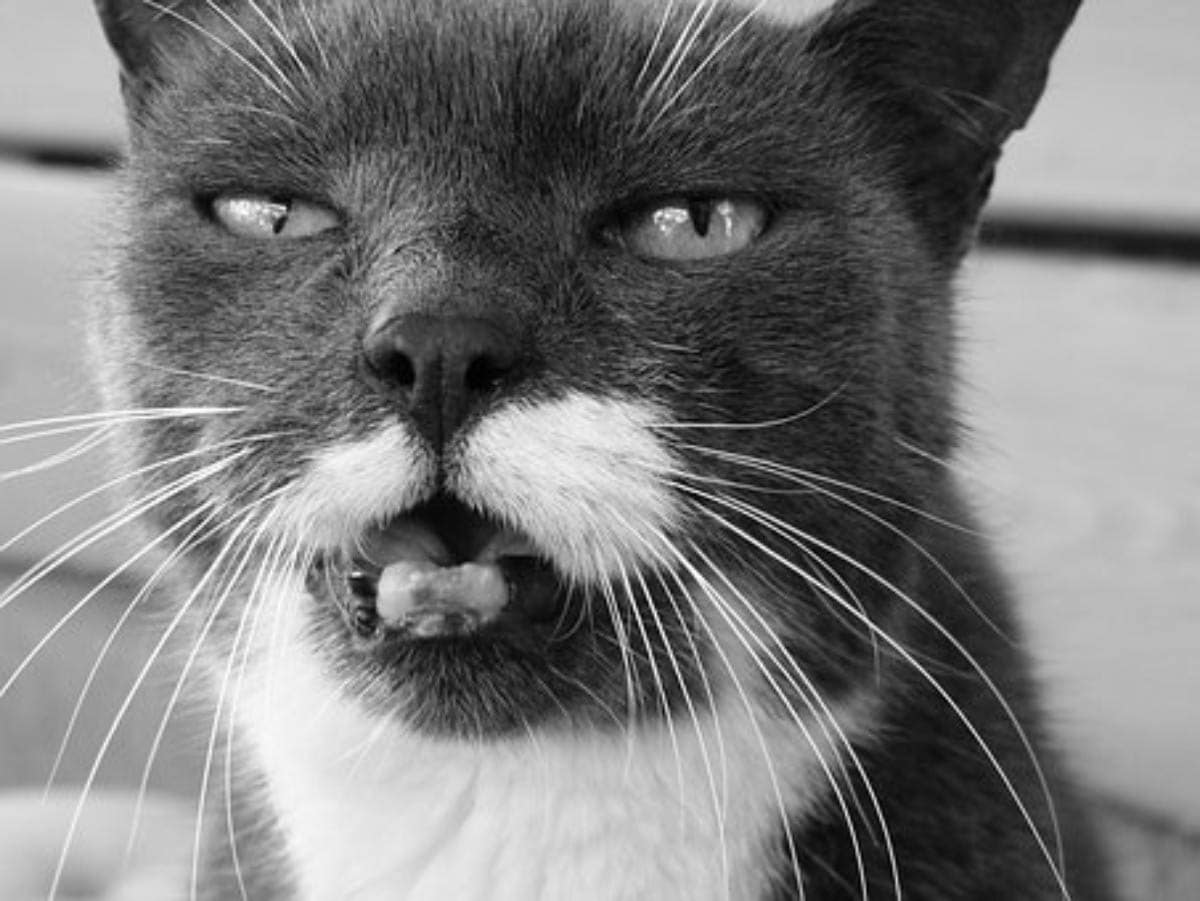At a glance
|
What is oral cancer
Also referred to as malignant neoplasms or malignant tumours, cancer is the uncontrolled division of cells that normally should be restricted in their growth. Tumours can be malignant (cancerous) or benign. Benign tumours grow slowly, are surrounded by a capsule and do not invade neighbouring tissue or spread to other areas.
Ten percent of all cancers in cats are oral cancer, and squamous cell carcinomas (SCC) are the most frequent type. This cancer accounts for 60-70% of all oral cancers in cats. The next most frequent are fibrosarcomas; other cancers include lymphoma and malignant melanoma.
This article will refer to SCC as it is the most common type of oral cancer in cats.
SCC is a particularly aggressive cancer, rapidly growing and invading nearby tissues and bone. It is rare for SCC to metastasise to other areas of the body. The average onset of the disease is 12 years.
Causes

The etiology has not yet been determined. One study found the following causative factors:
- Flea collars: Cats who wear flea collars are five times more likely to develop SCC, due to the proximity of the collar to the oral cavity.
- Passive smoking: Exposure to cigarette smoke inside the home puts cats at twice the risk of those not exposed. Not only do they inhale the smoke, but they also ingest it when they groom.
- Diet: Canned cat food, especially tuna flavour showed a three-fold increase in the risk of developing SCC.
Symptoms
Cats are extremely good at hiding signs of pain and cancers of the oral cavity can go unnoticed for some time. As with all cancers, early detection of oral cancer offers a better outcome.
- Ulcerated, red lesion on the gums, tongue or underneath the tongue
- Difficulty eating and/or a loss of appetite
- Painful mouth and/or face
- Bleeding in the mouth
- Bad breath
- Swollen face
- Loose teeth
- Enlarged lymph nodes under the jaw
- Drooling
- Grooming less
- Weight loss due to loss of appetite
Diagnosis
Your veterinarian will perform a complete physical examination of your cat, carefully checking the oral cavity for lumps and loose teeth (which can be indicative of bone loss) as well as checking local lymph nodes for signs of enlargement. He will obtain a medical history from you, including how long you have noticed the growth and other symptoms.
Diagnostic workup:
- Baseline tests: Biochemical profile, complete blood count, and urinalysis to evaluate the overall health of your cat. The biochemical profile may reveal high blood calcium due to bone disintegration (lysis).
- Imaging: X-rays will also be taken while the cat is under anesthesia to determine the extent of bone involvement and chest x-rays to look for signs of metastasis in the lungs.
- Histopathology: Biopsy of the growth which will be sent to a laboratory for evaluation.
Once a diagnosis has been made, your veterinarian will stage the tumour, which will include the size of the tumour, bone invasion and regional lymph nodes.
Treatment
The outcome for cats with oral cancer is poor due to the aggressive nature of the tumour. Only 10% surviving the one year mark. Extensive bone involvement is common which makes surgery difficult, if not impossible. Even when surgical removal occurs, the recurrence rate is very high.
Treatment can be difficult due to cancer quickly invading surrounding tissues.
- If the tumour is found early enough and is in the front portion of the mandible (lower jaw) surgery (mandibulectomy) may be performed.
- Cryosurgery (freezing) for small tumours.
- Radiation therapy may be recommended before surgery to shrink the cancer or after surgery to kill off any remaining cells.
- Radiotherapy or chemotherapy for tumours that are too large, or in a part of the mouth that makes it impossible to surgically remove.
Palliative care:
For tumours too advanced to treat, the following treatment options can improve your cat’s quality of life.
- Non-steroidal anti-inflammatory drugs (NSAIDs) such as piroxicam can slow down tumour growth.
- Antibiotics will be prescribed to treat bacterial infections which may occur, these are common in cats with oral cancer.
- Analgesics to relieve pain.
- Nutritional support as cats are often reluctant to eat due to pain, which may involve the placement of a feeding tube to maintain adequate nutrition.
Prevention
It is not always possible to prevent cancer but early detection can offer more treatment options and a better outcome.
Avoid the use of flea collars; tablets and topical flea treatment options are available from your veterinarian.
Perform a monthly exam on your cat which includes a look inside the mouth (if possible) to look for anything abnormal. If you do see something, seek veterinary attention as soon as possible.
Do not smoke inside or around cats.

